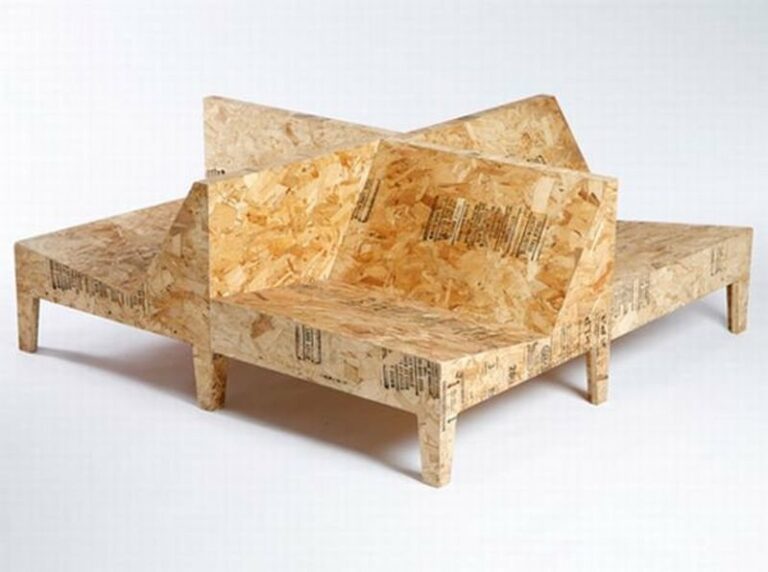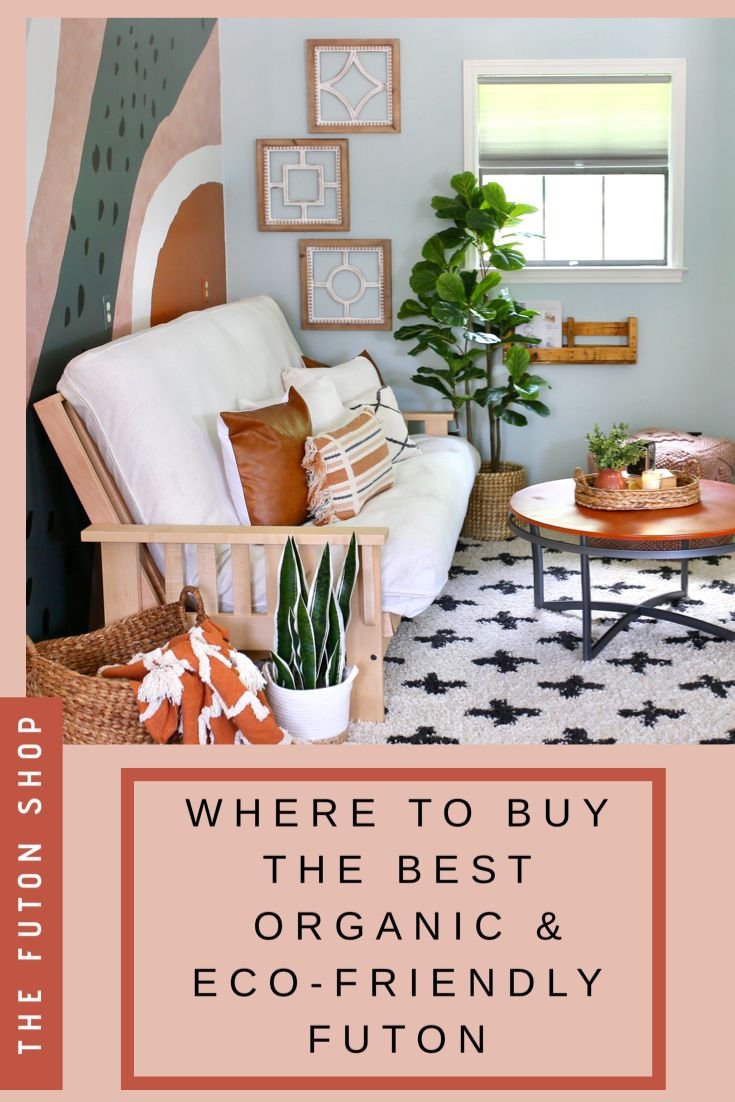How to Make Your Own Eco-Friendly Furniture?
How to Make Your Own Eco-Friendly Furniture? Well, you’re in luck! In this article, we’ll guide you through the process of creating your own sustainable and environmentally friendly furniture pieces.
From choosing the right materials to incorporating unique design elements, we’ll show you how to make furniture that not only looks great but also reduces your carbon footprint. So, if you’re ready to embark on a rewarding DIY project that promotes sustainability, keep reading to learn how to make your eco-friendly furniture.
How to Make Your Own Eco-Friendly Furniture?
Whether you are passionate about reducing your carbon footprint, enjoy DIY projects, or simply want to have unique and eco-friendly furniture pieces in your home, making your own eco-friendly furniture can be a rewarding and sustainable endeavor. By repurposing materials, using non-toxic finishes, and opting for sustainable design principles, you can create beautiful furniture that is good for the planet and adds a personal touch to your living space. In this article, we will guide you through the process of making your own eco-friendly furniture, step by step.
Choosing Sustainable Materials:
To create eco-friendly furniture, it’s important to start with materials that are sustainable, renewable, and preferably reclaimed or repurposed. Here are some options to consider:
Reclaimed Wood
Using reclaimed wood is a popular choice for eco-friendly furniture. It involves repurposing old wood from various sources, such as old furniture, barns, or pallets. Reclaimed wood adds character to your furniture while reducing the demand for new timber.
Bamboo
Bamboo is another sustainable material to consider. It is fast-growing, renewable, and has a minimal environmental impact. Bamboo furniture can be sturdy, durable, and aesthetically pleasing.
Recycled Materials
Explore creative ways to incorporate recycled materials into your furniture. For example, you can use recycled metal for frames, repurpose old fabrics for upholstery, or find unique pieces at thrift stores to give them a new life.
Designing Eco-Friendly Furniture:
When designing your own eco-friendly furniture, it’s important to consider sustainable design principles. Here are some key factors to keep in mind:
Functionality
Design furniture with practicality and functionality in mind. Optimize the use of space and ensure that the furniture serves its intended purpose effectively.
Durability
Create furniture that is built to last. Durable pieces reduce the need for frequent replacements, minimizing waste and resource consumption.
Repurposing and Modularity
Design furniture that can be easily disassembled, repurposed, or transformed into other pieces. This approach offers flexibility and extends the lifespan of your furniture.
Size and Scale
Consider the size and scale of your furniture to ensure it fits well within your living space. Avoid oversized pieces that may require excessive materials or take up unnecessary space.
Tools and Techniques:
To bring your eco-friendly furniture ideas to life, you will need some essential tools and knowledge of various techniques. Here are some common tools and techniques used in furniture-making:
Essential Tools
– Power drill
– Circular saw
– Chisels
– Sandpaper
– Clamps
– Measuring tools (tape measure, square, etc.)
Joinery Techniques
Explore different joinery techniques to assemble your furniture pieces without relying on harmful adhesives or metal fasteners. Some common joinery techniques include:
– Mortise and tenon
– Dovetail joints
– Tongue and groove
Finishes and Sealants
When it comes to finishes and sealants, opt for non-toxic and eco-friendly options. Traditional finishes often contain harmful chemicals, so consider natural finishes like beeswax, linseed oil, or shellac.
Eco-Friendly Furniture Ideas:
Now that you have an understanding of sustainable materials, design principles, and techniques, let’s explore some eco-friendly furniture ideas to inspire your DIY projects:
Upcycled Pallet Coffee Table
Transform an old pallet into a stylish coffee table. Sand it down, add a coat of non-toxic paint or stain, and attach caster wheels for easy mobility.
Reclaimed Wood Shelving:
Build rustic shelving units using reclaimed wood. Combine different-sized planks and secure them with traditional joinery techniques for a unique look.
Bamboo Bed Frame:
Construct a sturdy bed frame using bamboo poles and traditional joinery. Add a natural finish and pair it with a non-toxic mattress for a truly eco-friendly sleeping oasis.
Recycled Fabric Upholstered Chair:
Take an old chair frame and give it a fresh look by reupholstering it with recycled fabric. Choose fabrics made from organic or recycled materials to minimize environmental impact.
Maintaining Your Eco-Friendly Furniture
To ensure the longevity of your eco-friendly furniture, proper maintenance is essential. Here are some tips to keep in mind:
Regular Cleaning
Dust and clean your furniture regularly to prevent dirt buildup and maintain its original appearance. Use non-toxic cleaning solutions to avoid unnecessary exposure to harmful chemicals.
Sun Protection
Direct sunlight can cause fading and damage to your furniture. Place it away from direct sunlight or use window treatments to protect it from harmful UV rays.
Repair and Restore
If any damage occurs, don’t rush to replace the furniture. Instead, explore ways to repair and restore it. This approach reduces waste and allows you to keep enjoying your favorite pieces for longer.
A different way to make sustainable furniture
Frequently Asked Questions
What materials can I use to make eco-friendly furniture?
There are several materials you can use to make eco-friendly furniture, such as reclaimed wood, bamboo, cork, and recycled metal. Reclaimed wood is an excellent choice as it reduces deforestation, while bamboo is sustainable and grows quickly. Cork is a renewable material that is harvested without harming the tree, and recycled metal helps reduce waste. Using these materials will contribute to the overall eco-friendliness of your furniture.
How can I ensure that my furniture is non-toxic and safe for the environment?
To make sure your furniture is non-toxic and environmentally safe, you should opt for natural finishes and adhesives. Look for paints, varnishes, and sealants that are low in volatile organic compounds (VOCs) and free from harmful chemicals. Choose water-based products over solvent-based ones to minimize the release of toxic fumes. Additionally, consider using natural, non-toxic adhesives like wood glue made from plant-based ingredients instead of conventional adhesives containing harmful substances.
Are there any sustainable upholstery options for eco-friendly furniture?
Yes, there are sustainable upholstery options available for eco-friendly furniture. Look for fabrics made from organic and natural materials, such as organic cotton, hemp, linen, or even recycled polyester. These materials require less energy and water to produce and are free from harmful chemicals. You can also choose to reupholster existing furniture using these sustainable fabrics to minimize waste.
What design considerations should I keep in mind when making eco-friendly furniture?
When designing eco-friendly furniture, consider creating pieces that are durable, modular, and multifunctional. Durable furniture will have a longer lifespan, reducing the need for frequent replacements. Modular designs allow for easy disassembly and reconfiguration, making it easier to repair and update the furniture as needed. Additionally, incorporating multifunctional features like storage compartments or convertible elements can maximize the utility of the furniture, reducing the need for additional pieces.
How can I repurpose or upcycle existing materials to make eco-friendly furniture?
Repurposing or upcycling existing materials is a great way to make eco-friendly furniture. Look for old furniture, pallets, or discarded items that can be transformed into something new and functional. For example, you can turn an old wooden door into a stylish table, or repurpose wine crates as shelves. By repurposing these materials, you not only reduce waste but also give them a new lease of life, adding a unique touch to your furniture.
Where can I find eco-friendly furniture-making tutorials or resources?
You can find eco-friendly furniture-making tutorials and resources online through websites, blogs, and video platforms. Many DIY enthusiasts and sustainable living advocates share their knowledge and experiences in creating eco-friendly furniture. Look for websites dedicated to sustainable living, online communities, or YouTube channels specializing in DIY projects. These platforms often provide step-by-step instructions, tips, and ideas to help you create your own eco-friendly furniture.
Final Thoughts
creating your own eco-friendly furniture is a rewarding and sustainable way to reduce waste and contribute to a healthier environment. By repurposing materials, using non-toxic finishes, and choosing sustainable sources, you can make furniture that is both aesthetically pleasing and environmentally responsible. Taking the time to research and plan your projects, as well as incorporating eco-friendly design principles, will ensure that your furniture is not only beautiful but also contributes to a greener future. So, start exploring your creativity and learn how to make your own eco-friendly furniture today!



